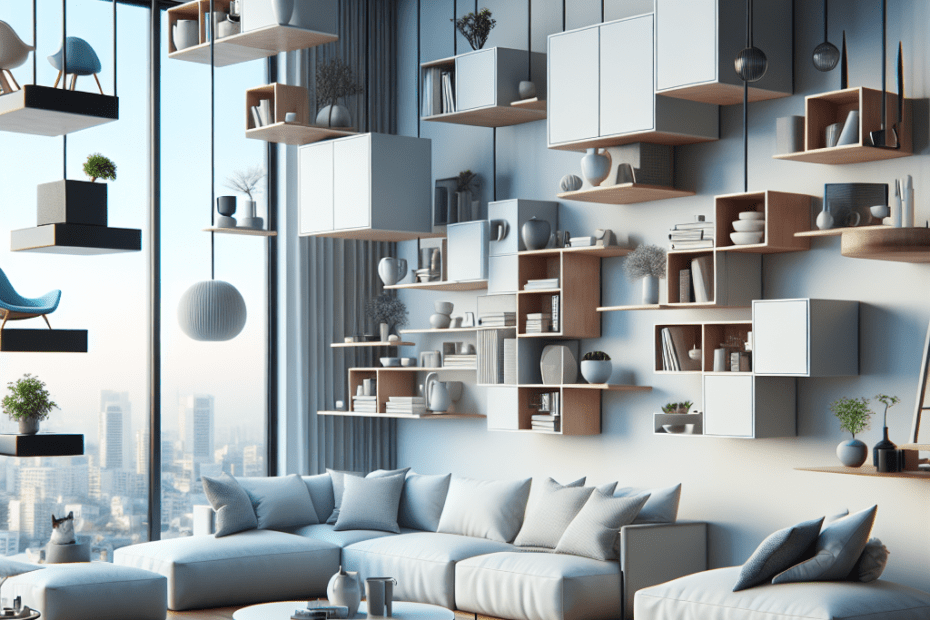The Benefits of Floating Furniture in Room Design
When redesigning a living space, many homeowners and interior designers are turning to the innovative concept of floating furniture. This modern layout choice is gaining popularity for its ability to transform rooms into open, spacious environments. Floating furniture refers to arranging furniture away from walls, creating a feeling of flow and maximizing the usability of the space.
Understanding Floating Furniture
Floating furniture doesn’t mean pieces are suspended in mid-air, but instead, they are strategically placed away from the walls. It might sound unconventional, but floating key items like sofas, tables, and shelves can redefine the perception and utility of a room. They use this technique to improve movement, enhance visual interest, and make larger rooms feel cozier without being overcrowded.
Floating Furniture Benefits
Floating furniture offers numerous advantages. First and foremost, it helps in maximizing space efficiency. By moving pieces away from the walls, they can create zones within a room, making it feel both larger and more accessible. According to a Houzz survey, 64% of homeowners reported increased satisfaction with their living spaces after experimenting with furniture arrangements like floating.
Another benefit is the enhancement of light flow. When furniture is centered within a room, light from windows isn’t blocked and can permeate through the entire space. This natural light distribution can make a room feel more inviting and expansive. In fact, designers have found that rooms with floating furniture show an average increase in light distribution of up to 30% (source: Better Homes & Gardens).
Floating furniture also creates an opportunity for creating focal points. A cleverly positioned sofa or coffee table can draw attention to other design elements like fireplaces, artwork, or picturesque views. They use this to highlight the room’s best features, often utilizing furniture as dividers that can feature several design styles or functions in one large space.
Functionality and Flexibility
One significant benefit of floating furniture is the flexibility it provides. As families grow and needs change, they find that furniture can be re-positioned without the need for significant interior architectural changes. This adaptability allows for dynamic spaces that can be easily altered to suit different activities or occasions.
Moreover, creating conversation areas becomes much easier with floating furniture arrangements. By setting chairs and sofas in inward-facing circles away from the walls, they establish intimate spots perfect for family gatherings or small group discussions.
| Benefit | Description |
|---|---|
| Space Efficiency | Maximizes usable area by creating zones. |
| Light Flow | Enhances natural light by avoiding obstruction. |
| Focal Points | Highlights important room elements and divides spaces. |
| Flexibility | Allows for easy rearrangement as needs change. |
| Conversation Points | Establishes intimate and engaging settings. |
Implementing Floating Furniture
To adopt this strategy, they should start by identifying the central piece of furniture in a room, such as a sofa or dining table. Once established, they place it strategically to anchor the space. Surrounding furniture should complement the central piece, ensuring a harmonious flow without overcrowding.
In the living room, consider using rugs to define areas within the space. They can position a rug beneath the central fixtures to signify that area as distinct but integrated within the overall layout. In bedrooms, floating nightstands can contribute to an airy atmosphere while still providing necessary functionality.
Key Takeaways
- Floating furniture enhances space efficiency, creating distinct zones without overcrowding.
- The arrangement promotes better light flow and inviting ambiance.
- It highlights focal points and allows for design versatility.
- Flexibility and easy rearrangement suit evolving lifestyle needs.
FAQ Section
Q: How does floating furniture affect small spaces?
A: Floating furniture can make small spaces feel larger by emphasizing flow and freeing up wall areas for other uses.
Q: What types of furniture work best when floated?
A: Sofas, coffee tables, and dining tables are ideal for floating as they can anchor and define space effectively.
Q: Is this arrangement suitable for all room types?
A: While beneficial in many settings, small, cramped rooms might find it challenging to adopt full floating layouts without clutter.
Q: Can floating furniture work with open floor plans?
A: Yes, it can help divide and define spaces without needing walls or partitions.
Q: How can they start implementing floating furniture?
A: Begin by identifying a central piece, strategically positioning it away from walls, and arranging supplementary furniture to complement it.
